Team
- Omar Hamad
- John Moyer
- Cal Niezabytowski
- Jessica Reyes
Mentor
Wendy Lane
Abstract
Children can become uneasy in a hospital environment, and being transported within the hospital is one of the aspects where joyful and calming elements for children may be lacking: wheelchairs and gurneys, for example, mostly imply sickness and unease for the user. Building a transportation cart that can be considered fun and more appealing for children will help lower their stress levels, and increase their quality of experience in a potentially disturbing environment.
Existing Solutions/ Requirements and Specifications
Currently, the hospital uses the wooden cart below. Through their experience with the wooden transportation device, we were able to come up with a list of requirements and specifications.

Requirements:
-Must support the weight of a 95th percentile child below 11 years of age.
-Must move horizontally in all orientations.
-Must feature attachment mechanisms that hold medical equipment (IV bags, Alaris IV Pump, Oxygen Tanks, etc.).
-The seating area must allow unobstructed access to child while reasonably preventing the child from falling out.
-Must feature cushioning (made of FDA approved material that does not cause child discomfort.
-Able to be sanitized with the hospital cleaner, Cavi-Wipes.
Specifications:
-Device must be able to hold 115 lbf (95th percentile for 11-year-old) with a safety factor of 3 under normal operation without yield.
-Device must not tip over when a pushing force of 40 pounds is applied at waist height (3ft), at any side of the device, if the wheels become locked.
-Device must fit in space envelope defined as 6 feet high, 5 feet long, and 3 feet wide.
-Seating area must be 2 feet wide +/- 4 in.
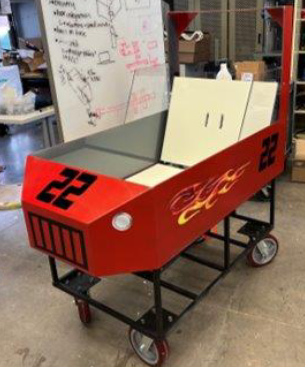
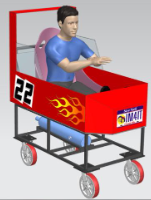
Material Choices
Various manufacturing material choice analyses went into creating the final prototype. We ultimately decided to use A500 steel for the frame, partly due to its cheap cost, ease of manufacture, and its welding capabilities. The A500 steel was shaped into square tubes, which simplified connecting welds and cutting pieces. If price was not a limiting factor, our team would have liked to explore more lightweight materials, such as aluminum. Some aluminums have yield strengths near the steel we used, so we decided that we could have used the same bars as in steel. Aluminum is also around 1/3rd the weight of steel, and using it in our design would reduce the overall weight of the prototype by 21 pounds, making it much easier to push up and down inclines.
In terms of corrosion resistance over time, aluminum may have been a better material choice. While aluminum still mildly corrodes, it does not rust, making it much safer in a medical environment. However, we decided that by painting the frame instead of leaving it as exposed metal would make the difference in corrosion resistance minimal between the two metals.
Also of note is that aluminum is much harder to weld than steel. This is due in part to the high melting point of the oxide layer that covers aluminum compared to the melting point of aluminum itself. To get through the oxide layer, the weld must be done at a very high temperature, but this temperature may lead to a burn through in the aluminum, thus destroying the part itself. Since we decided to weld the frame ourselves, we decided to play it safe and go with steel instead.
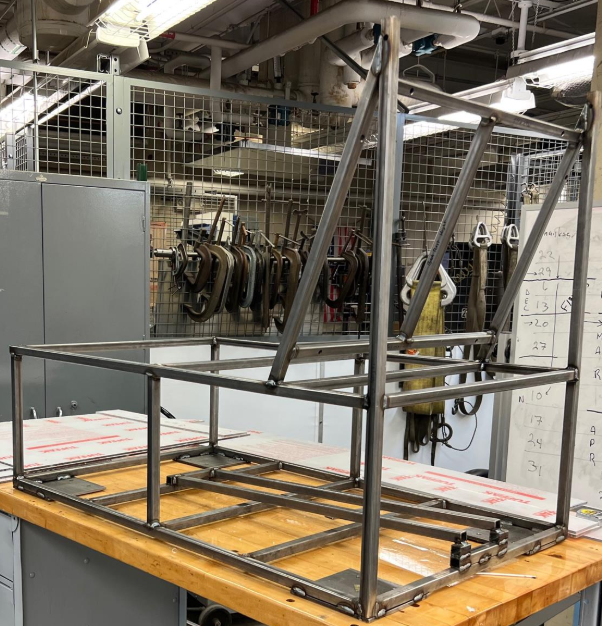
Because of the harsh chemicals used to clean surfaces in the hospital, all parts had to be compatible with the ingredients in CaviWipes, whose main ingredient is Isopropyl Alcohol. This lead to us choosing polycarbonate panels for our enclosure rather than acrylic, as acrylic degrades when in contact with isopropyl alcohol.
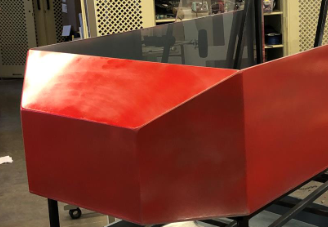
Additionally, all paints had to be nonacrylic, which turned out to be a hard endeavor, as most commercially available paints are made with acrylic. Special paint had to be sourced from the hospital. This paint, as mentioned before, was for corrosion resistance, and also made the device itself look nice.
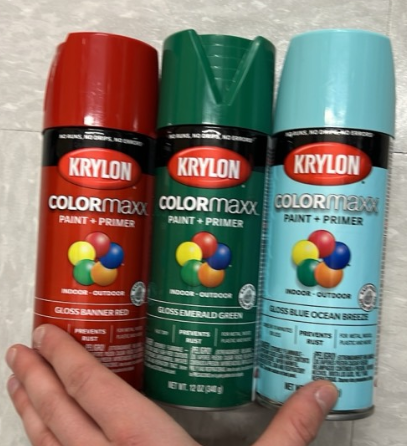
Analysis
Analysis of the frame was done using point loads on the joints of the frame. Using a 1 pound geometrically distributed load, we found that the steel frame could support a maximum load of 2219 pounds, giving us a Margin of Safety of 6.4. This high Margin of Safety was allowed due to the uncertainty of welds that would be performed by teammates. Eventually, welding classes were taken, and these welds would turn out to be satisfactory.

We designed a steel connector plate to which the casters can be fastened to, and which will be welded to the frame. (We performed the analysis using 2D & 3D models, with frame modeled as solid vs and as a fixed constraint, and a convergence study for both iterations, but the geometry of the attachment prevented sufficiently small differences between iterations. Nonetheless, we found that the resulting factor of safety remained high enough even as the mesh size was significantly reduced. We proceeded with the face-to-face iteration rather than plate edge to frame faces for its convenience to the welding process.

Testing
We have three main tests that we have completed: one for load rating, one for tipping over, and one for overall size.
-To satisfy our specification for 115 pounds with a factor of safety of 3, we loaded the device with ourselves, equaling at least 345 pounds. Key lengths were measured before and after loading to ensure yield did not occur.
-Our tipping specification was tested using a bathroom scale and pushing perpendicular to the side panels at a height of 3ft. This test ensures that if our device is leaned on accidentally, that it will not tip over, or shatter the polycarbonate panels.
-To ensure that our device can traverse the narrow hallways and fit in the elevator, we create a space envelope that the device must fit in. Measurements were taken for height, width, and length
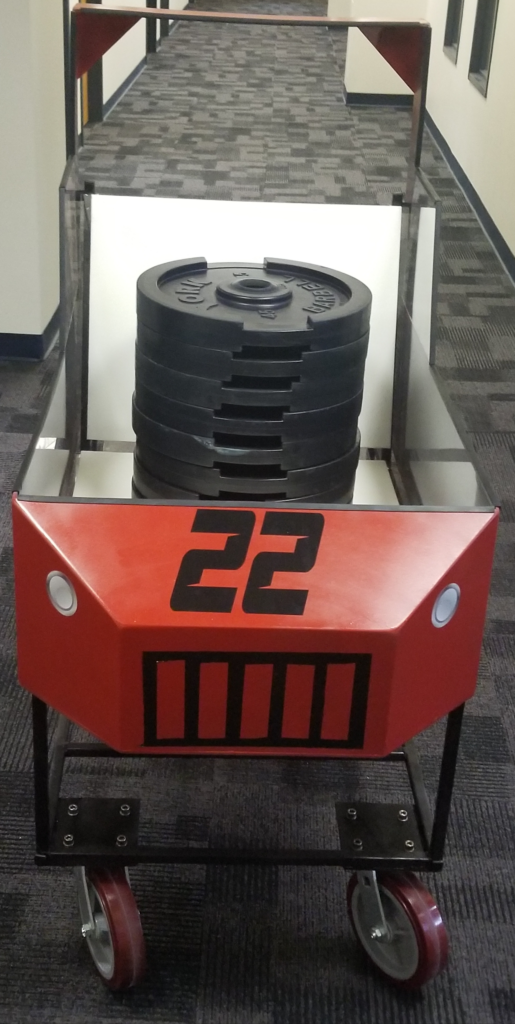
Acknowledgements
We would like to thank our TA Eileen Bequette and our supervisor Professor Muir for their help with establishing the theory behind our device. We would also like to thank Mike Pomerantz, Bill Mildenberger, and Jim Atkins for their help in the machine shops manufacturing and assembling our device.
